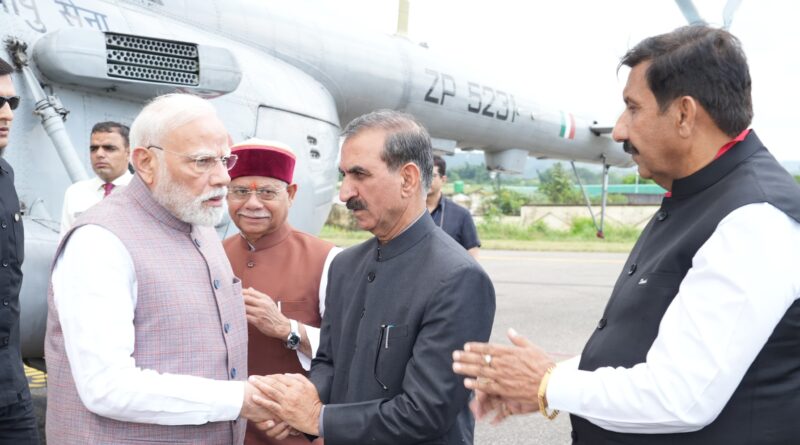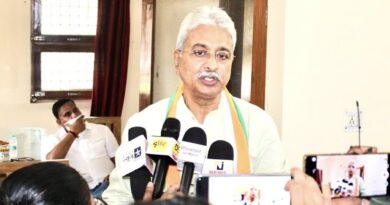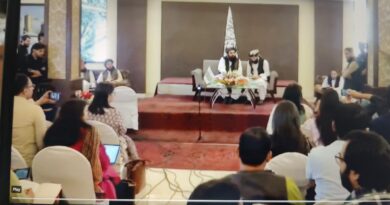PM Modi surveys flood-hit Himachal, Punjab amid calls for relief
Narendra Modi meets victims, including a toddler orphaned by floods, as states demand massive aid packages to recover from unprecedented monsoon devastation.
NewsArc Bureau
Kangra, Himachal Pradesh – Prime Minister Narendra Modi conducted an aerial survey of flood-ravaged areas in Himachal Pradesh and Punjab on September 9, 2025, assessing the catastrophic damage caused by relentless monsoon rains. In a poignant moment, Modi met one-year-old Nitika in Mandi, whose family was swept away in a June 30 cloudburst, offering her a toffee and holding her in his arms. The visit, aimed at reviewing relief efforts and meeting affected communities, comes as both states grapple with widespread destruction and demand urgent financial aid.
What Did Modi’s Visit Entail?
Modi began his day in Himachal Pradesh, landing at Pathankot Airbase before conducting an aerial survey of Kullu, Mandi, and Chamba districts, where cloudbursts, landslides, and flash floods have caused damages estimated at ₹4,080 crore. In Dharamshala, he chaired a high-level meeting with state officials, National Disaster Response Force (NDRF), State Disaster Response Force (SDRF), and Aapda Mitra volunteers to evaluate ongoing relief operations. He met 18 flood-affected individuals, including Nitika, whose parents and grandmother perished in Mandi’s cloudburst, listening to their stories of loss.
Later, Modi will arrived in Gurdaspur, Punjab, one of the worst-hit districts, where he will conduct another aerial survey and held discussions with senior officials. He interacted with flood victims, rescue teams, and local farmers, whose crops across 1.75 lakh hectares were destroyed. Modi emphasized solidarity, stating on X, “The Government of India stands shoulder to shoulder with those affected in this tragic hour.”
What Is the Scale of the Crisis?
Himachal Pradesh has reported 370 deaths since June 20, with 205 linked to rain-related incidents like landslides, flash floods, and cloudbursts, and 165 in road accidents. Infrastructure losses include 6,344 damaged houses, 461 shops, and 744 blocked roads, including three national highways. Punjab, declared a disaster-hit state across all 23 districts, has seen 51 deaths and 3.9 lakh people affected, with 1,902 villages submerged. The floods, triggered by swollen rivers like the Sutlej, Beas, and Ravi, have been exacerbated by releases from Punjab’s Ranjit Sagar Dam, which overwhelmed downstream areas.
What Are the States Demanding?
Punjab’s Aam Aadmi Party (AAP) government has sought ₹80,000 crore from the Centre to address crop losses, livestock deaths, and infrastructure damage. Chief Minister Bhagwant Mann, despite being unwell, welcomed Modi’s visit, urging comprehensive relief. Himachal Pradesh Chief Minister Sukhvinder Singh Sukhu requested a special relief package, estimating damages could exceed ₹5,000 crore. Both states emphasized the need for immediate funds to support rehabilitation and strengthen flood defenses.
What Is the Broader Context?
The 2025 monsoon season has been brutal for northern India, with Himachal Pradesh and Punjab bearing the brunt. Earlier, on September 5, Union Agriculture Minister Shivraj Singh Chouhan visited Amritsar, Gurdaspur, and Kapurthala to meet flood victims, signaling the Centre’s focus on the crisis. The floods, driven by unprecedented rainfall and dam releases, have sparked debates over flood management, with critics pointing to Punjab’s handling of Ranjit Sagar Dam as a key factor in the Ravi river’s devastation.
As Modi’s visit concludes, the focus shifts to the Centre’s response to the states’ pleas for aid. With both Himachal and Punjab facing long-term recovery, the government’s commitment to rebuilding infrastructure and supporting affected communities will be critical in mitigating the impact of one of India’s worst flood disasters in decades.




